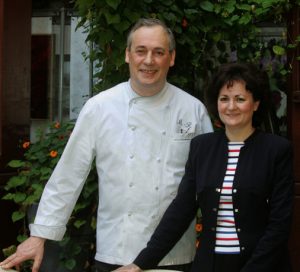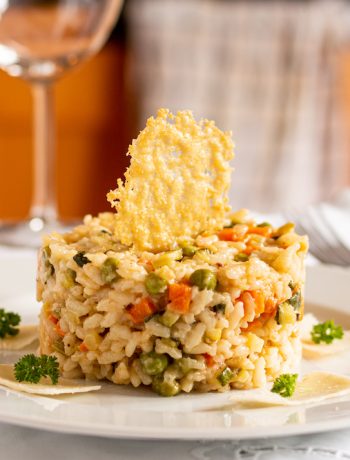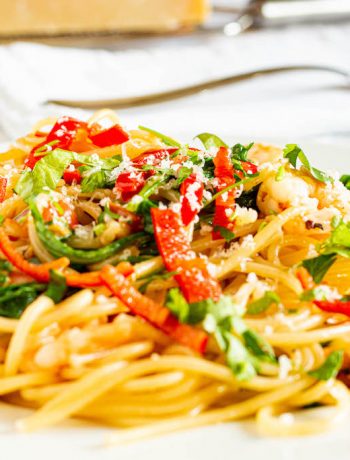Quenelles de foie are liver dumplings that originate from the Menin region of Belgium, and from Alsace and Lorraine in France. In Alsace, they sometimes go by their Germanic name ‘leverknepfle.’ Unjustifiably, they occupy but a byline the canon of classic quenelle dishes that is dominated by the classic pike preparation ‘quenelles de brochet.’ Quenelles de brochet are described even by Michel Roux Jnr as ‘difficult eating.’ These liver dumplings are way nicer.
British cook/wine sink Keith Floyd wrote his famous book Floyd on France in 1987. Within this book, the method for quenelles de foie is buried in a grander, more sausagey recipe for ‘choucroute aux quenelles de foie.’ Without buying this rather out-dated travelogue of a stone-drunk bon viveur, it is not possible to discover his receipe for liver dumplings. However, in Episode 4 of the accompanying TV show, Floyd cooked the dish (quite clearly for the first time) in a the kitchens of La Maison des Têtes in Colmar, Alsace. The BBC has stuck this debacle of mishandling on YouTube, and it is that recipe I have transcribed here. I have attributed the dish to both Floyd and the then head chef and owner of La Maison des Têtes, Marc Rohfritsch.

Watching the clip of the show is essential to getting the dish right. There are a few places it can trip you up:
- The liver slurry needs to be exactly that. It needs to have the consistency of a good dose of diarrhoea. If the mixture is too thick, you will get dense dumplings and bad ratings on Insta. It it is too thin then you might as well tip the whole mix straight in the water strain it and chuck it in the bin. Escoffier suggests they are made with a thicker mix than this; but lighter is nicer, if a little less neat and tidy.
- You need to spoon the liver mixture into the poaching water in one smooth movement with no hanging about. The clip below will show you what happens when Keith Floyd left the spoon in the water for too long, and you will learn a choice French expletive along the way – “Chef! J’suis dans le merde!”
La Maison des Têtes can be found at 19 Rue des Têtes, 68000 Colmar, France. Call +33 3 89 24 43 43 or email contact@maisondestetes.com for a reservation. The hotel restaurant is now run by husband and wife team Eric and Marilyne Girardin.

Quenelles de foie
Ingredients
- For the quenelles:
- 500g liver (ideally pig, but calf or lamb will do)
- 150g bacon
- 1 onion, finely chopped
- Knob of unsalted butter
- 4 eggs
- 2 tbsp semolina flour (durum/pasta flour)
- 2 tbsp parsley, finely chopped
- Pinch of nutmeg, grated
- 2 small handfuls of breadcrumbs soaked in milk
- For the sauce:
- 4 tbsp (60ml) white wine
- 100ml demi glace (see notes)
- Knob of unsalted butter
- Sea salt and freshly ground black pepper
- To serve:
- Fresh tomato, chopped
- Fresh chives, chopped
Instructions
Set a large, wide pan (sauté or frying) filled with water over the heat. Bring to a simmer, and then set low so it steams but does not bubble.
Fry the onion in the butter until soft.
Run the liver, bacon and half the cooked onions through a mincer into a bowl.
Add the breadcrumbs, flour, parsley, nutmeg and half the eggs to the liver mixture and stir. Carefully add the remaining eggs so that you have a loose slurry that resembles ... well, see note 1 in the article above. Season.
Using a dessert spoon, carefully lower the mixture, spoon by spoon into the hot water to create the poached quenelles (rinse the spoon after each quenelle). They will take about 12 minutes to cook.
To make the sauce, heat the remaining onions in their pan and add 3 tbsp of the white wine to deglaze the pan (keep the rest back). Reduce the wine until it has lost gone. Add the demi glace, stir smooth and bubble some more until thick. Add the butter and melt. Add the remaining wine. Strain the sauce into a jug or small pan.
Once the quenelles are cooked (they will float quite well), remove them from the water with a slotted spoon and gently blot with kitchen paper.
Arrange the quenelles on plates and spoon the sauce over and around, Add the tomatoes to the centre of the plates and cast over the chopped chives. Serve with boiled potatoes.
Notes
For a method for demi glace, see here.






No Comments